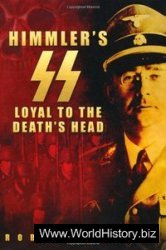Multiracial and committed to a nonviolent strategy, CORE took part in many of the 1960s civil rights struggles, including SIT-INS, voter registration drives, and freedom RIDES, before shifting to a more militant stance.
The Congress of Racial Equality was founded in 1942 at the University of Chicago by James Leonard Farmer, a black Methodist minister, George Houser, a white Methodist minister, Bernice Fisher and Homer Jack, two white divinity students at the University of Chicago, James R. Robinson, a white Catholic and pacifist, and Joe Guinn, a black National Association for the Advancement OF Colored People (NAACP) member. Farmer became the group’s leader.
Committed to the principle of nonviolence, CORE’s first action was the desegregation of the City Roller Rink in Chicago. Other early efforts included a campaign to desegregate Palisades Amusement Park in New Jersey and a “journey of reconciliation” that set a biracial team of 16 people on a ride through the upper South to test a Supreme Court decision outlawing segregation in interstate travel. Three of the riders were arrested in North Carolina and sentenced to 30 days on road gangs.

Dr. Martin Luther King, Jr., addressing CORE demonstrators who are protesting the seating of the Mississippi delegation during the Democratic National Conference, Atlantic City, New Jersey, 1964 (Library of Congress)
CORE gained national attention in May 1961, following a Supreme Court decision holding that segregation in interstate transportation facilities was unconstitutional. Together with the Student Nonviolent Coordinating Committee (SNCC), CORE organized freedom rides, which carried biracial teams through the South in an attempt to desegregate bus terminals. The freedom rides, while unsuccessful in the short term, brought the civil rights struggle much attention. As a result, CORE’s budget increased to $750,000 in 1961. While most of the money came from northern white liberals, CORE membership quickly moved to include a majority of southern black activists. In the spring and summer of 1962, CORE led less-publicized efforts to desegregate restaurants along Virginia, North Carolina, and Florida highways.
Throughout the mid-1960s, CORE organized nationwide boycotts and sit-ins to force corporations to hire more blacks, targeting Sears and Roebuck, California’s Bank of America and Lucky Stores, along with New York and Cleveland construction sites. In 1963, CORE-supported sit-ins and demonstrations reached their apex with the August 28 March on Washington. That summer, CORE’s national director James Farmer was almost killed by troopers as he organized registration drives and desegregation protests in Plaquemine, Louisiana.
On April 22, 1964, CORE demonstrators disrupted the opening of the New York World’s Fair, chanting “Freedom Now!” as President Lyndon B. Johnson delivered a speech. Farmer, Bayard Rustin, and Michael Harrington were arrested. The 1964 Summer Project saw SNCC and CORE members organize freedom schools, registration drives, and the Mississippi Freedom Democratic Party (MFDP), which tried to replace the segregated state Democratic Party. On June 21, James Chaney, a black CORE member, and white CORE workers Michael Schwerner and Andrew Goodman were shot dead near Meridian, Mississippi, while on their way to help register black voters.
The violence CORE activists faced, along with impatience on the part of blacks, pushed CORE to adopt a more militant program of action. In 1964, grass-roots community organization replaced direct action as CORE’s weapon of choice. Many CORE workers blamed white members for the lack of responsiveness on the part of local blacks and advocated programs of racial pride and autonomy, organized by blacks, as the main solution. Propositions to bar whites from membership in CORE multiplied and many whites left the organization. CORE’s commitment to nonviolence waned, as local activists sought the protection of self-defense groups, such as the Deacons for Defense. Farmer praised the Deacons’ work at the 1965 CORE convention in Durham, North Carolina, where Jonesboro Deacons leader Ernest Thomas delivered a speech.
In January 1966 Farmer stepped down as national director. CORE chose Floyd McKissick over the less militant George Wiley as his successor. McKissick supported separatism and moved CORE’s headquarters to Harlem in August 1966. That same year, the national CORE convention in Baltimore adopted Black Power as the organization’s main slogan, renounced nonviolence in favor of self-defense, and condemned the Vietnam War.
Even though CORE’s positions were not quite as radical as those of SNCC, the organization lost most of its white membership and financial support, which translated into rising deficits and acute financial problems starting in 1966. In mid-1968, Roy Innis, the chairman of the Harlem chapter, replaced McKissick as national director. Innis centralized CORE’s structure, created the CORE Special Purpose Fund to increase fund-raising, and started reducing the organization’s $1 million debt. Innis toned down core’s objectives, advocating Black Nationalism and community economic development. Even though it never managed to regain the influence it had garnered in the early 1960s, CORE, under the leadership of Innis, survives to this day.
Further reading: Inge Powell Bell, CORE and the Strategy of Nonviolence (New York: Random House, 1968); August Meier and Elliott Rudwick, CORE: A Study in the Civil Rights Movement, 1942-1968 (New York: Oxford University Press, 1973).
—Philippe R. Girard




 World History
World History









